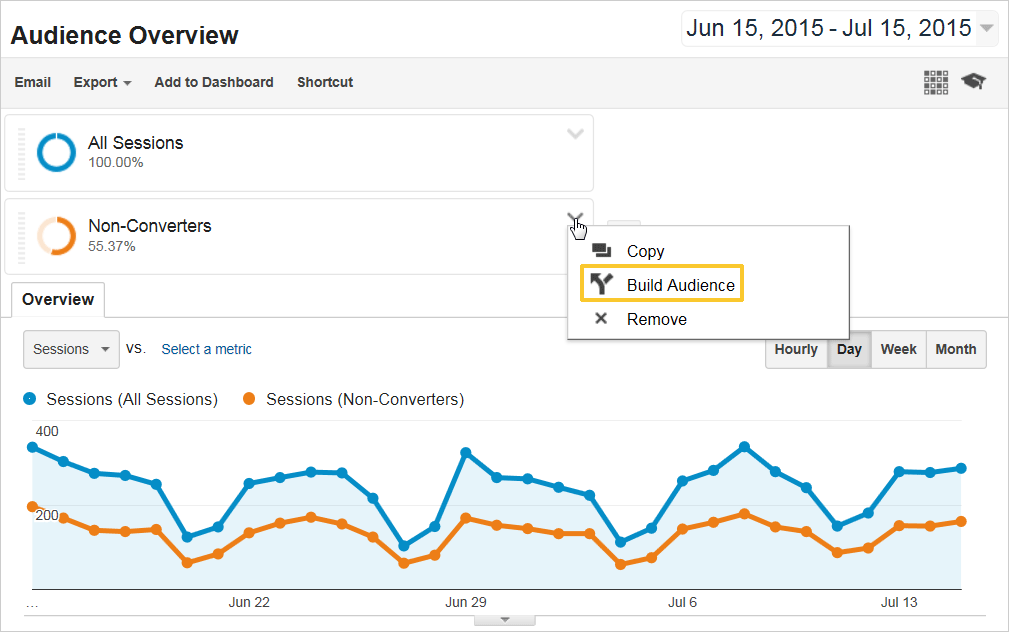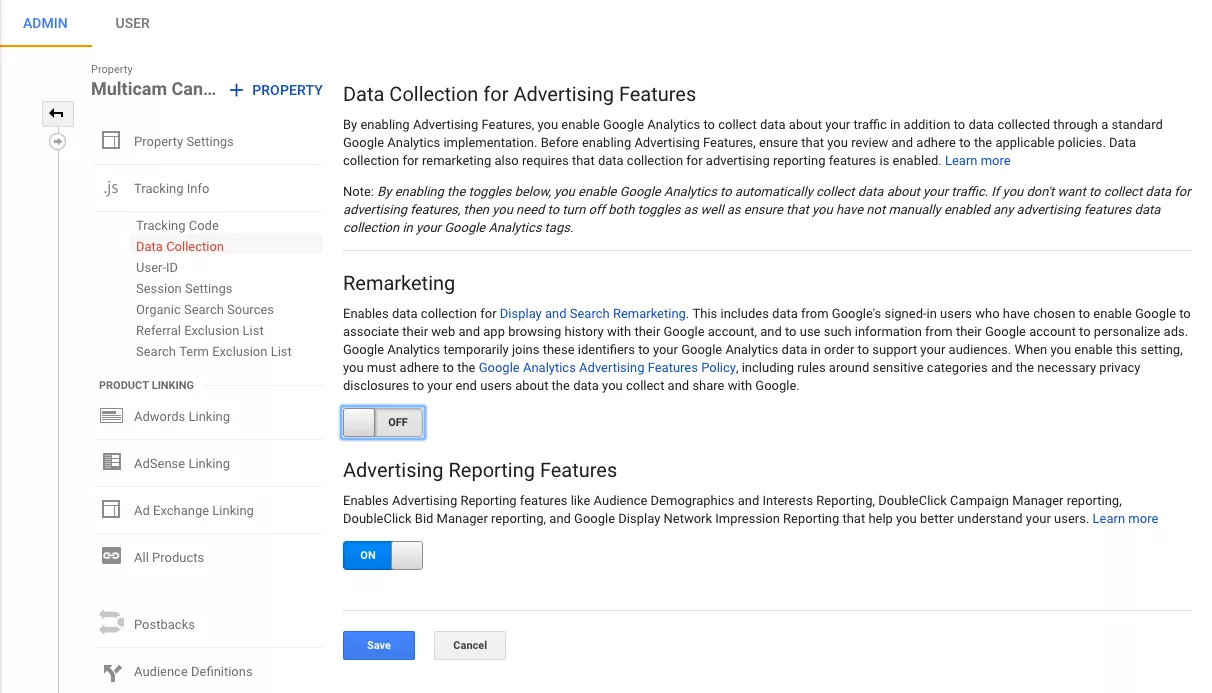Remarketing in Google Analytics: Changing Site Visitor Information Into Sales
The capacity to precisely target audiences based on their actions and preferences opens doors to a realm of opportunities, pushing companies in the direction of lasting development and profitability. With a meticulous analysis of visitor activities and a customized remarketing strategy, services can browse the electronic landscape with accuracy and skill, untangling the true potential of their on the internet existence.

Benefits of Remarketing in Google Analytics
Remarketing in Google Analytics uses organizations the opportunity to reconnect with web site site visitors that have actually revealed passion in their solutions or items, therefore raising brand visibility and conversions. By leveraging this effective device, organizations can remain top-of-mind with possible consumers who have already involved with their site. Among the vital advantages of remarketing is the capacity to target certain target markets based upon their actions on the internet site, enabling individualized messaging and tailored marketing campaigns.
Additionally, remarketing in Google Analytics can assist companies raise their conversion rates by re-engaging with visitors that might not have actually made a purchase or completed a wanted activity on the site during their preliminary see. This targeted technique can result in higher conversion prices and inevitably drive more sales. Additionally, remarketing can also aid services develop brand name loyalty and trust by keeping constant communication with prospective clients throughout their buying trip.
Setting up Remarketing Campaigns
When starting remarketing projects in Google Analytics, companies require to meticulously intend and implement tactical targeting methods to successfully reach their desired target market. The first step in establishing up remarketing campaigns is to specify clear objectives. Whether the objective is to enhance internet site conversions, promote particular products, or raise brand name awareness, having a distinct purpose will certainly assist the entire project technique.
Next, companies need to develop audience checklists based on specific requirements such as website visitors, customers that deserted their purchasing carts, or those who engaged with particular content. These listings enable targeted messaging customized per segment of the target market, enhancing the opportunities of conversion.

Lastly, services should establish up conversion monitoring to gauge the success of their remarketing campaigns accurately. By analyzing the performance data, services can maximize their projects for better outcomes and greater ROI.
Leveraging Target Market Division for Remarketing
Using target market division is a critical method for boosting the performance of remarketing projects in Google Analytics (What Is “Remarketing” In Google Analytics?). By splitting your site visitors right into distinct teams based upon their habits, demographics, or passions, you can customize your remarketing initiatives to target these certain sections with relevant ads. Audience segmentation allows you to create even more tailored and targeted projects, raising the opportunities of re-engaging site visitors and driving conversions
Segmenting your target market enables you to deliver customized messaging that resonates with each team's requirements and preferences. As an example, you can develop separate remarketing lists for customers that deserted their buying carts, went to specific product web pages, or downloaded a certain source. By comprehending the different motivations and passions of these sections, you can craft engaging ad creatives that are more probable to capture their focus and trigger them to revisit your website.
In addition, target market segmentation additionally helps you optimize your advertisement spend by concentrating on high-value sections that are more likely to convert - What Is “Remarketing” In Google Analytics?. By assessing the performance of each sector, you can assign your budget better and take full advantage of the return on your remarketing financial investment
Analyzing Remarketing Performance Metrics
To successfully assess the success of remarketing projects in Google Analytics, analyzing crucial efficiency metrics is crucial. Metrics such as click-through price (CTR), conversion rate, price per acquisition (CPA), and return on advertisement spend (ROAS) give important understandings right into the effectiveness of your remarketing efforts. CTR shows the percentage of individuals that clicked your ad after seeing it, reflecting the advertisement's importance and interest your target market. Conversion price gauges the percentage of users that finished a desired action, such as purchasing, after clicking on your ad. CPA assists establish the price of getting a consumer through your remarketing campaign, while ROAS evaluates the income produced for each dollar spent on marketing. By examining these metrics, you hop over to here can identify locations for renovation, maximize your projects, and allocate budget better to take full advantage of the ROI of your remarketing methods in Google Analytics.

Best Practices for Remarketing Success
Building on the structure of analyzing remarketing performance metrics, implementing ideal methods is essential to achieving success in your remarketing ventures. One important best technique is to sector your audience efficiently. By splitting your audience based upon their habits, demographics, or interests, you can develop customized messaging that resonates with each segment, inevitably boosting the likelihood of conversion. In addition, make sure that your remarketing ads are visually attractive and contain engaging phone call to action. Catching the customer's attention and motivating them to take the preferred action is important.
Bombarding see it here users with the same ad repetitively can lead to annoyance and decreased effectiveness. Check your projects on a regular basis, assess the information, and make data-driven decisions to continuously refine your remarketing efforts for maximum impact.
Conclusion
Finally, remarketing in Google Analytics supplies services the possibility to take advantage of visitor information to boost sales and drive conversions. By using audience division, assessing efficiency metrics, and implementing best techniques, services can customize their remarketing efforts to target high-value segments successfully. With compelling ad creatives and conversion monitoring, services can build brand name loyalty and trust, eventually taking full advantage of the impact of their advertising methods.
With a meticulous evaluation of visitor actions and a customized remarketing method, services can navigate the digital landscape with precision and finesse, untangling the real potential of their on the internet visibility.
One of the key benefits of remarketing is the capacity to target particular target markets based on their actions on the site, enabling for customized messaging and customized advertising projects.
In addition, remarketing can also assist companies construct brand name commitment and trust fund by maintaining constant interaction with potential customers throughout their acquiring trip.
Metrics such as click-through rate (CTR), conversion rate, cost per purchase (CPA), and return on advertisement invest (ROAS) offer important insights into the efficiency of your remarketing initiatives. By analyzing these metrics, you can determine areas for improvement, enhance your campaigns, and designate budget plan extra efficiently to take full advantage of the ROI of your remarketing approaches blog here in Google Analytics.
 Ariana Richards Then & Now!
Ariana Richards Then & Now! Gia Lopez Then & Now!
Gia Lopez Then & Now! Freddie Prinze Jr. Then & Now!
Freddie Prinze Jr. Then & Now! Karyn Parsons Then & Now!
Karyn Parsons Then & Now! Dawn Wells Then & Now!
Dawn Wells Then & Now!